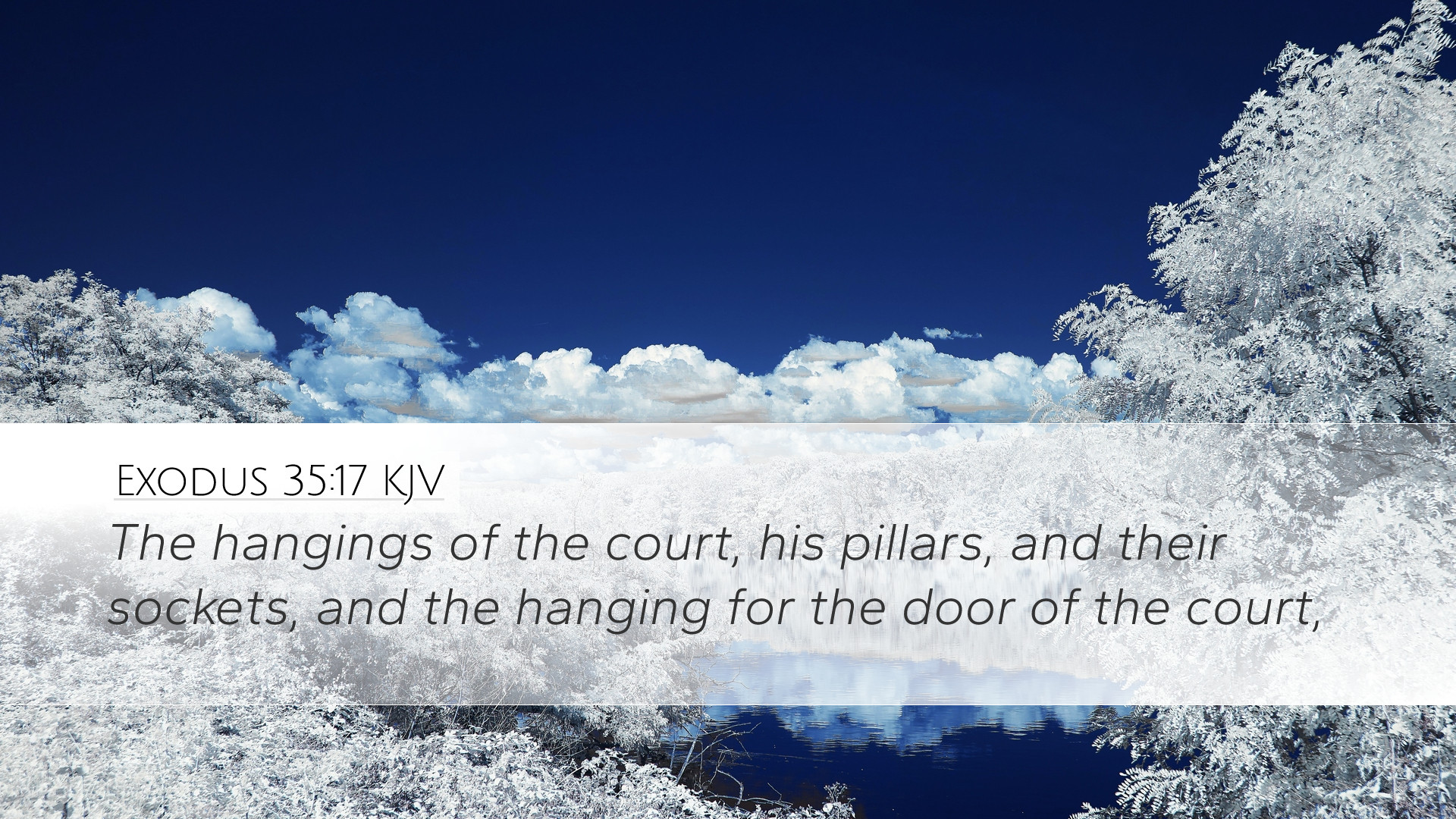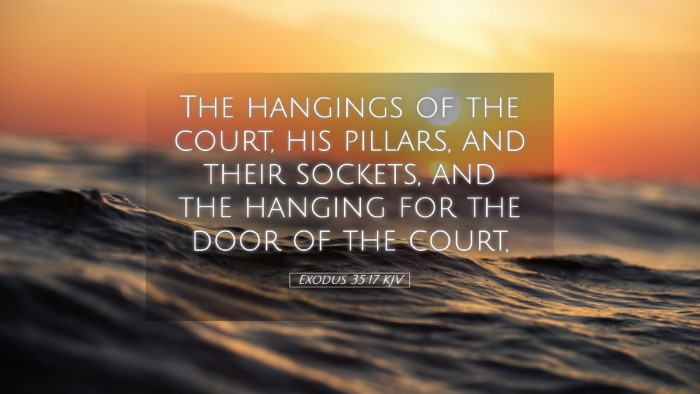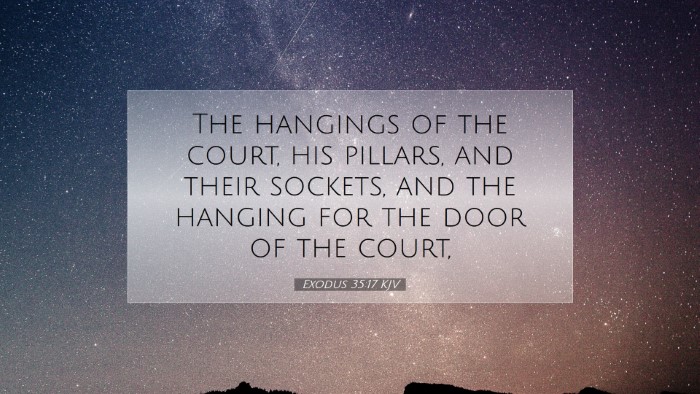Commentary on Exodus 35:17
Exodus 35:17 reads: "The curtain of the entrance to the tent of meeting," which denotes the construction of the tabernacle and the significance of each component involved in its building. This verse encapsulates the commitment and cooperative spirit that characterized the Israelites as they prepared to fulfill God’s command.
Introduction to the Tabernacle
The tabernacle served as the dwelling place of God among His people, a quintessential symbol of His presence and a center of worship. Public domain commentaries such as those by Henry, Barnes, and Clarke highlight the theological implications and practical necessities surrounding this sacred structure.
Insights from Matthew Henry
Matthew Henry emphasized the unity and communal participation present in the construction of the tabernacle. He observed:
- Divine Command and Human Response: The requirements for building the tabernacle revealed God’s design for communal worship. The people responded generously to an invitation to contribute, showcasing their devotion to God’s directives.
- Symbol of God's Presence: The curtain mentioned in this verse represents the separation between the holy and the most holy. It signifies that God is not only close but also accessible to those who approach Him reverently.
- Preparation for Worship: The meticulous crafting of the curtain suggests that worship demands careful preparation and a heart aligned with God’s holiness.
Reflections from Albert Barnes
Albert Barnes provided detailed examination into the furnishing of the tabernacle. He noted the importance of each element, particularly the curtain:
- Functional Aspects: The construction of the entrance curtain was not merely aesthetic; it had protective qualities, symbolizing the sacredness of the space where God's glory would dwell. It served to shield the holiness of the tabernacle.
- Covenantal Significance: The verse highlights the new covenant relationship between God and His people, with the tent symbolizing God’s willingness to dwell among man. The opening of this curtain calls to mind the future significance of Christ's sacrifice, which would indeed render the path to God direct and unhindered.
- Materials Used: Insights into the specific materials used (fine linen dyed blue, purple, and scarlet) emphasize the splendor and worthiness of what is offered to God, encouraging followers to reflect on their own offerings to Him.
Insights from Adam Clarke
Adam Clarke offered a detailed examination of the theological implications surrounding the tabernacle:
- Theological Context: The tabernacle illustrates the progression of God’s interaction with humanity. Clarke emphasized that every detail, including the curtain, serves a larger purpose in salvation history, foreshadowing the ultimate truth of Christ's sacrifice.
- Symbolism of the Curtain: Clarke described the curtain not merely as a physical barrier but as a divine ordinance, signifying the need for holiness in approaching God. The separation depicted by this curtain is a powerful reminder of the holiness of God and the seriousness of sin.
- Call to Worship: The invitation to contribute to the tabernacle’s construction reflects God’s desire for active participation from His people in worship. Clarke encourages believers to be involved in building the Church, as they share in God’s mission.
Application for Today
For pastors, students, theologians, and scholars, Exodus 35:17 serves as a profound reminder of the necessity of cooperation in fulfilling God’s commands. It speaks to organized worship and the intentionality required in approaching God:
- Commitment to Community: Just as the Israelites came together to build the tabernacle, contemporary believers are encouraged to foster community within the Church. Collective faith results in a powerful witness to the world.
- Understand the Sacred: Understanding the meaning behind sacred objects and rituals fosters deeper spiritual insight, allowing practitioners to engage meaningfully with their faith.
- Offering Ourselves: The act of contributing to God’s work today—whether through resources, time, or effort—is as relevant as it was in Moses’ day, representing a living sacrifice to God.
Conclusion
In summary, Exodus 35:17 invites deep reflection on the sacredness of worship, the importance of community in serving the Lord, and the divine invitation to partake in God's work. As we examine the intricate details and the overarching narrative of God's covenant, may we be inspired to approach Him with reverence and an offering of our lives.


